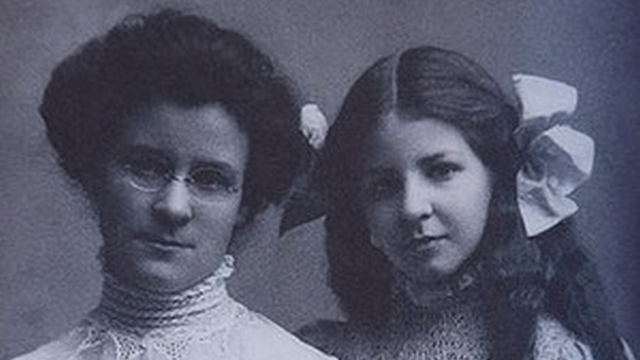
Personality types [Personality & TKMS series]
This is part 10 of a series of articles featuring edited portions of Dr. Maureen Sullivan’s PhD dissertation.
Allport1 indicated that distinctive thinking and behavioral patterns of an individual could be determined by the individual‘s personality. However, individual personality traits emerge when an individual is studied from different aspects. In fact, many psychologists agree that individual behavior is related to personality traits and the context of these traits2 3.
Eysenck‘s4 study suggested five principles related to personality traits: efforts expectancy, replicability, external correlates, and comprehensiveness. These principles were later identified as the Big Five Factors, or the five-factor model (FFM)5.
Personality type models
Myers-Briggs
Carl Jung‘s theory of psychological types (extroversion, introversion, sensing, and intuition) asserts that random behavior in individuals is actually quite orderly and normal, and is caused by differences in how individuals receive information and make decisions6. However, this notion has caused much debate among psychologists.
Theorist, Jung, described the orientations of personality type‘s extroversion and introversion (EI) as follows: “Some people are oriented to a breadth-of-knowledge approach with quick action; others are oriented to a depth-of-knowledge approach reflecting on concepts and ideas” 7. Additionally, Jung described the information gathering styles and perception as sensing and intuition (SN) as follows: “With sensing and intuition, some people are attuned to the practical, hands-on, commonsense view of events, intuition – while others are more attuned to the complex interactions, theoretical implications or new possibilities of events” 8.
Two styles of decision making, thinking and feeling (TF), were also discussed by Jung. Capretz9 said that “through thinking and feeling, some people typically draw conclusions or make judgments objectively, dispassionately, and analytically; others weigh the human factors or societal import, and make judgments with personal conviction as to their value”.
Lastly, Jung described two other personality styles as judgment and perception (JP):
Using judgment and perception, some people prefer to collect only enough data to make judgments before setting on a direct path to a goal, and typically stay on that path. Others are finely attuned to changing situations, alert to new developments that may require a change of strategy, or even a change of goals10.
Myers et al.11 described the Myers-Briggs Type Indicator (MBTI) as 16 personality types that are a result of the relationship among four preferences – EI, JP, TF, JP, and SN, and types are represented by the letters of preferred orientations (such as INTP, ISTJ, ENFP, etc.). As a note, personality types in individuals use all eight preferences, not just the four that are preferred.
Essentially, the MBTI describes 16 distinct ways of being normal. Capretz12 asserted that:
No preference is superior over any other preference, and no type is superior over any other type (though in a given situation, the preferences of one type may match the demands of the situation better than those of a different type).
The MBTI was evaluated from Jung‘s theory of psychological types and is considered atypical among personality assessment tests for a variety of reasons13. For instance:
The MBTI is based on one of the classic statements of personality theory; it claims to measure personality types rather than personality traits and it is widely used to explain individuals‘ personality characteristics not only to professionals but also to the individuals themselves and their friends, families, and coworkers.14
Consequently, the MBTI has risen in popularity as a personality instrument for organizational and industrial psychologists, and for people attempting to understand more about themselves.
Despite MBTI‘s popularity, some personality psychologists have not been that enthusiastic about using the instrument. Personality psychologists reference a study conducted by Stricker and Ross15 16, who performed a detailed analyses of the MBTI that resulted in a critical evaluation of the MBTI typology and scales. Theorists Coan17 and Comrey18 complained that the Jungian concepts, motivated by the MBTI, have been altered.
Other psychologists, like Mendelsohn, Weiss, and Feimer19 were concerned about the discovery of psychological types and the limitation of the MBTI measurements to measure other personality traits other than quasi-normally distributed personality traits20 21. Despite the problems noted with the MBTI, its continued popularity shows that it must be effective on some levels and in some environments.
Five-factor model
The personality traits of the five-factor model (FFM) are sorted into extraversion (E), conscientiousness (C), agreeableness (A), neuroticism (N), and openness (O).
As explained by Wang and Yang22:
- “high extraversion persons are mostly positive, optimistic, are willing to take risks, like to be around crowds, have more social activities, and tend to look for amazement”
- conscientious persons are more commanding, thorough, reliable, and resilient
- people who are more agreeable are enthusiastic, empathetic, and cordial, and are likely to help others.
- “High nervousness persons are relatively unstable, easily to be frightened, rash, depressive, and angry”, and social pressure theoretically causes a person with the neuroticism type to exhibit a certain behavior
- persons exhibiting the personality trait of openness are imaginative, express their curiosity, and tend to readily accept various arrays of experiences and culture.
Next edition: Use of five-factor model of personality types in technology acceptance.
References:
- Allport, G. W. (1961). Pattern and growth in personality. NY: Holt, Rinehart & Winston. ↩
- Allport, G. W. (1961). Pattern and growth in personality. NY: Holt, Rinehart & Winston. ↩
- Endler, N. S., & Magnusson, D. (1976). In N. S. Endler, D. Magnusson (Eds.), Personality and person by situation interactions (Interactional Psychology and Personality). NY: Halsted-Wiley. ↩
- Eysenck, H. J. (1991). Dimensions of personality: 16, 5, or 3? – Criteria for a taxonomic paradigm. Personality and Individual Differences, 12(8), 773-790. doi:10.1016/0191-8869(91)90144-Z ↩
- Wang, H. I., & Yang, H. L. (2005). The role of personality traits in UTAUT model under online stocking. Contemporary Management Research, 1(1), 69-82. ↩
- Myers, I. B., McCaulley, M. H., Quenk, N. L., & Hammer, A. L. (1998). MBTI manual: A guide to the development and use of the Myers–Briggs type indicator (3rd Ed.). Palo Alto, CA: Consulting Psychologists Press. ↩
- Capretz, L. F. (2003). Personality types in software engineering. International Journal of Human-Computer Studies, 58(2), 207-214. doi:10.1016/S1071-5819(02)00137-4 ↩
- Capretz, L. F. (2003). Personality types in software engineering. International Journal of Human-Computer Studies, 58(2), 207-214. doi:10.1016/S1071-5819(02)00137-4 ↩
- Capretz, L. F. (2003). Personality types in software engineering. International Journal of Human-Computer Studies, 58(2), 207-214. doi:10.1016/S1071-5819(02)00137-4 ↩
- Capretz, L. F. (2003). Personality types in software engineering. International Journal of Human-Computer Studies, 58(2), 207-214. doi:10.1016/S1071-5819(02)00137-4 ↩
- Myers, I. B., McCaulley, M. H., Quenk, N. L., & Hammer, A. L. (1998). MBTI manual: A guide to the development and use of the Myers–Briggs type indicator (3rd Ed.). Palo Alto, CA: Consulting Psychologists Press. ↩
- Capretz, L. F. (2003). Personality types in software engineering. International Journal of Human-Computer Studies, 58(2), 207-214. doi:10.1016/S1071-5819(02)00137-4 ↩
- Capretz, L. F. (2003). Personality types in software engineering. International Journal of Human-Computer Studies, 58(2), 207-214. doi:10.1016/S1071-5819(02)00137-4 ↩
- McCrae, R. R., & Costa, P. T. (1989). The structure of interpersonal traits: Wiggins’s circumplex and the five-factor model. Journal of Personality and Social Psychology, 56(4), 586-595. doi:10.1037/0022-3514.56.4.586 ↩
- Stricker, L. J., & Ross, J. (1964b). Some correlates of a Jungian personality inventory. Psychological Reports, 14, 623-643. ↩
- Stricker, L. J., & Ross, J. (1964a). An assessment of some structural properties of the Jungian personality typology. Journal of Abnormal and Social Psychology, 8(1), 62-71. doi:10.1037/h0043580 ↩
- Coan, R. W. (1978). In O.K. Buros (Ed.), Review of Myers-Bnggs type indicator (The eighth mental measurements yearbook). Highland Park, NJ: Gryphon Press. ↩
- Comrey, A. L. (1983). An evaluation of the Myers-Bnggs type indicator academic.
Psychology Bulletin, 5, 115-129. ↩ - Mendelsohn, G. A., Weiss, D. S., & Feimer, N. R. (1982). Conceptual and empirical analysis of the typological implications of patterns of socialization and feminity. Journal of Personality and Social Psychology, 42(6), 1157-1170. doi:10.1037/0022-3514.42.6.1157 ↩
- DeVito, A. J. (1985). In J. J. V. Mitchell (Ed.), Review of Myers-Bnggs type indicator (Ninth mental measurements yearbook). Lincoln University: Nebraska Press. ↩
- Hicks, L. E. (1985). Dichotomies and typologies: Summary and implications. Journal of Psychological Type, 10, 11-13. ↩
- Wang, H. I., & Yang, H. L. (2005). The role of personality traits in UTAUT model under online stocking. Contemporary Management Research, 1(1), 69-82. ↩






